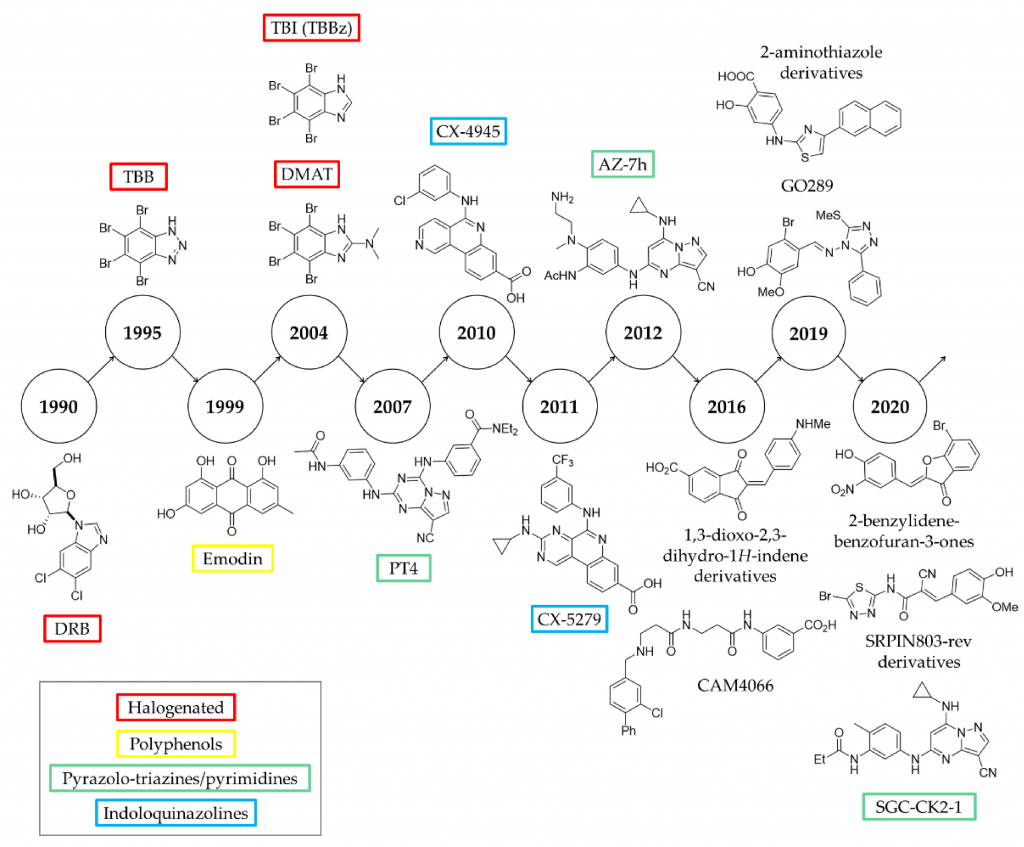Eleanor L. Atkinson, Jessica Iegre, Paul D. Brear, Elizabeth A. Zhabina, Marko Hyvönen and David R. Spring
Molecules 26(7):1977(2021)
DOI: 10.3390/molecules26071977
Pubmed: 33807474
Abstract
Protein kinases are a large class of enzymes with numerous biological roles and many have been implicated in a vast array of diseases, including cancer and the novel coronavirus infection COVID-19. Thus, the development of chemical probes to selectively target each kinase is of great interest. Inhibition of protein kinases with ATP-competitive inhibitors has historically been the most widely used method. However, due to the highly conserved structures of ATP-sites, the identification of truly selective chemical probes is challenging. In this review, we use the Ser/Thr kinase CK2 as an example to highlight the historical challenges in effective and selective chemical probe development, alongside recent advances in the field and alternative strategies aiming to overcome these problems. Continue reading →


